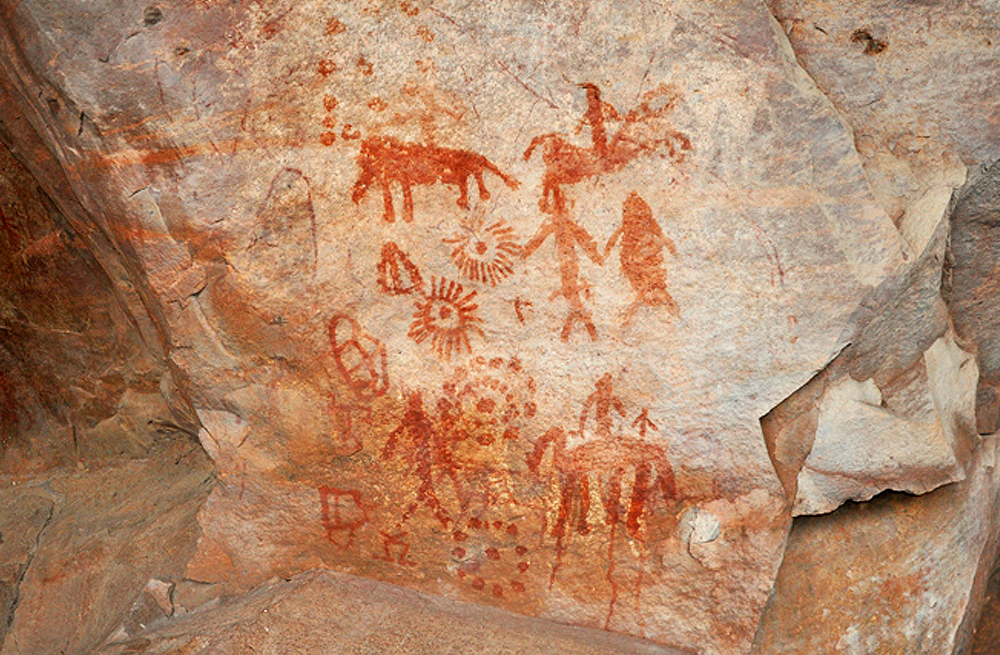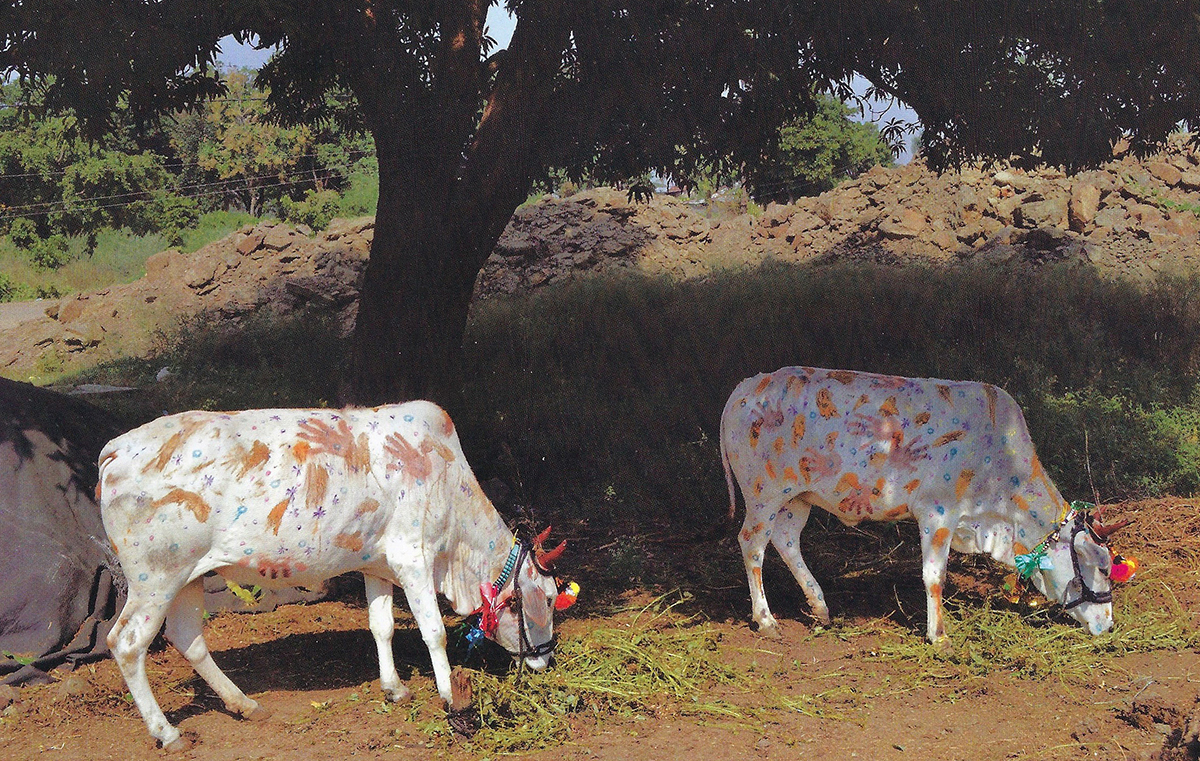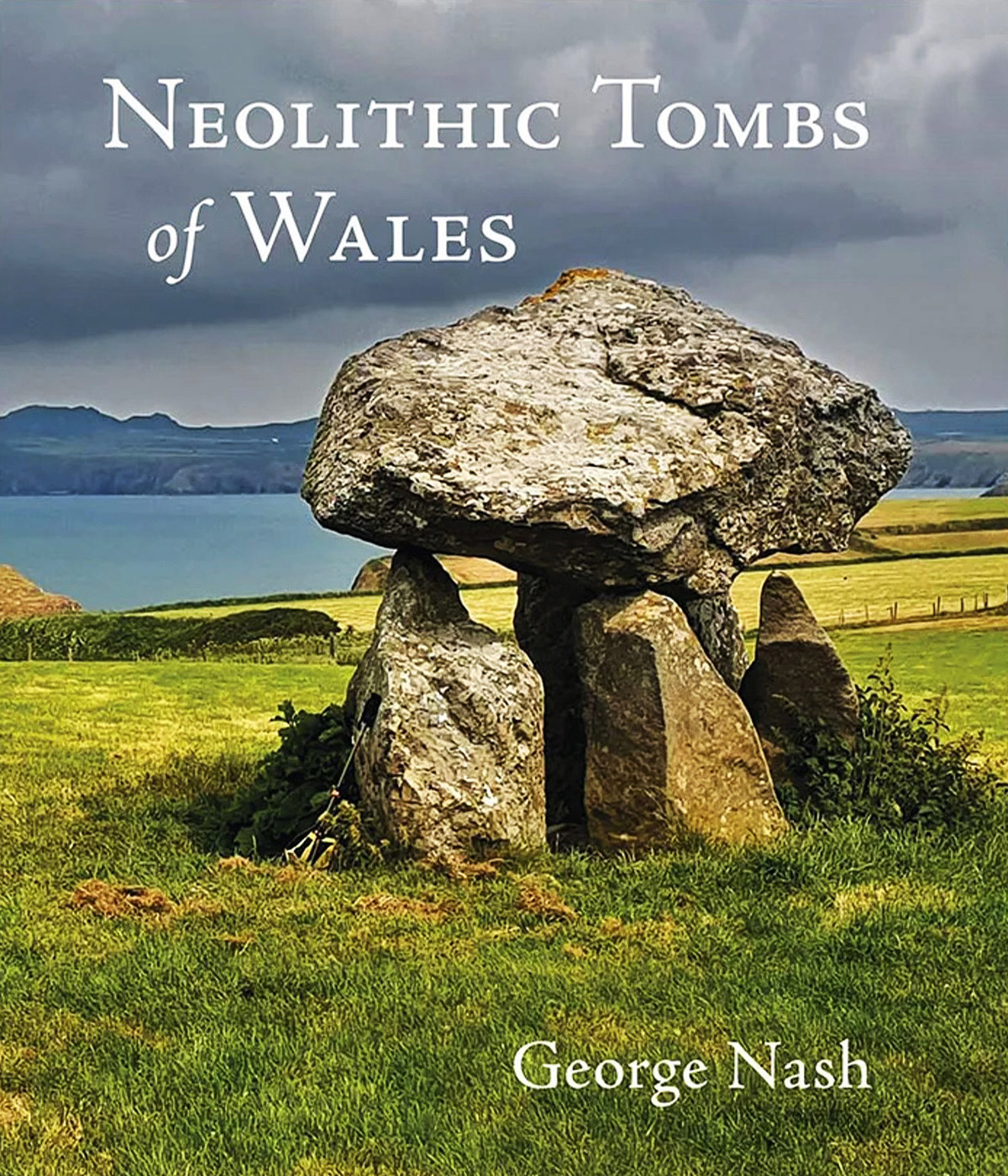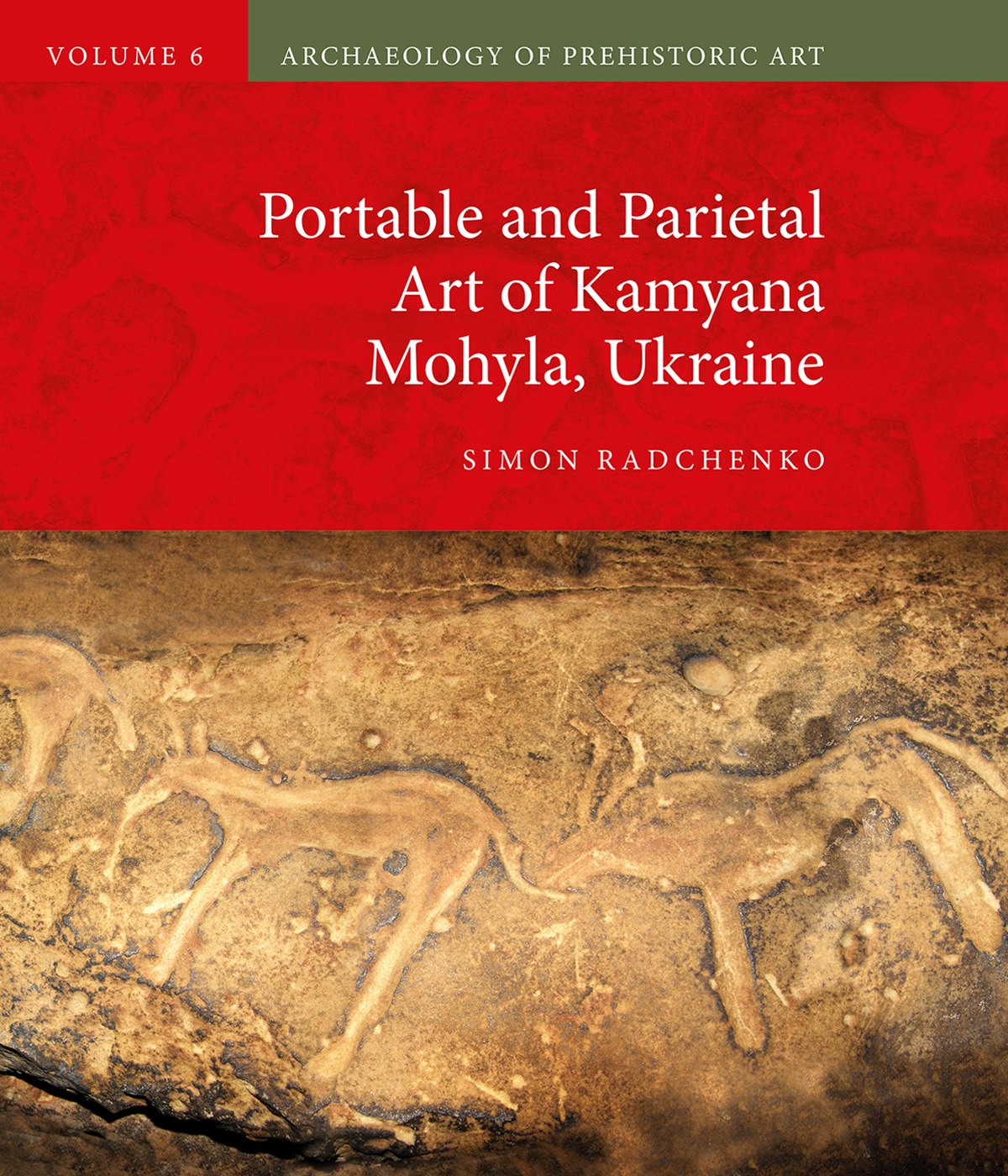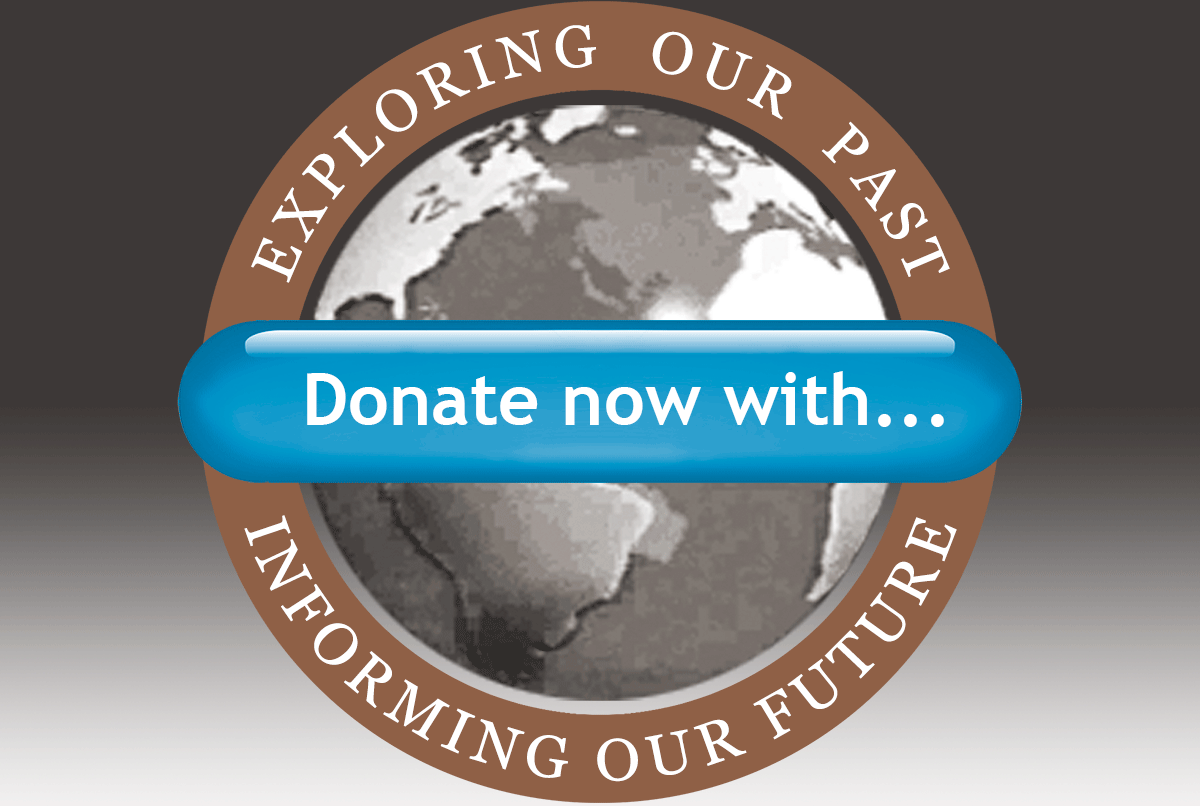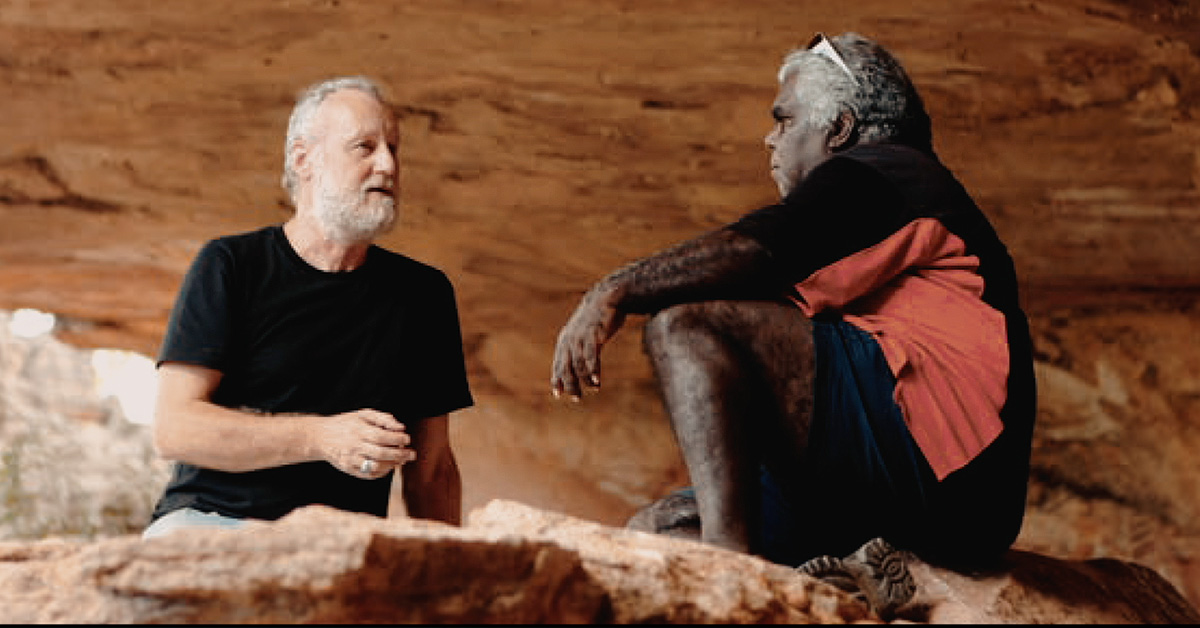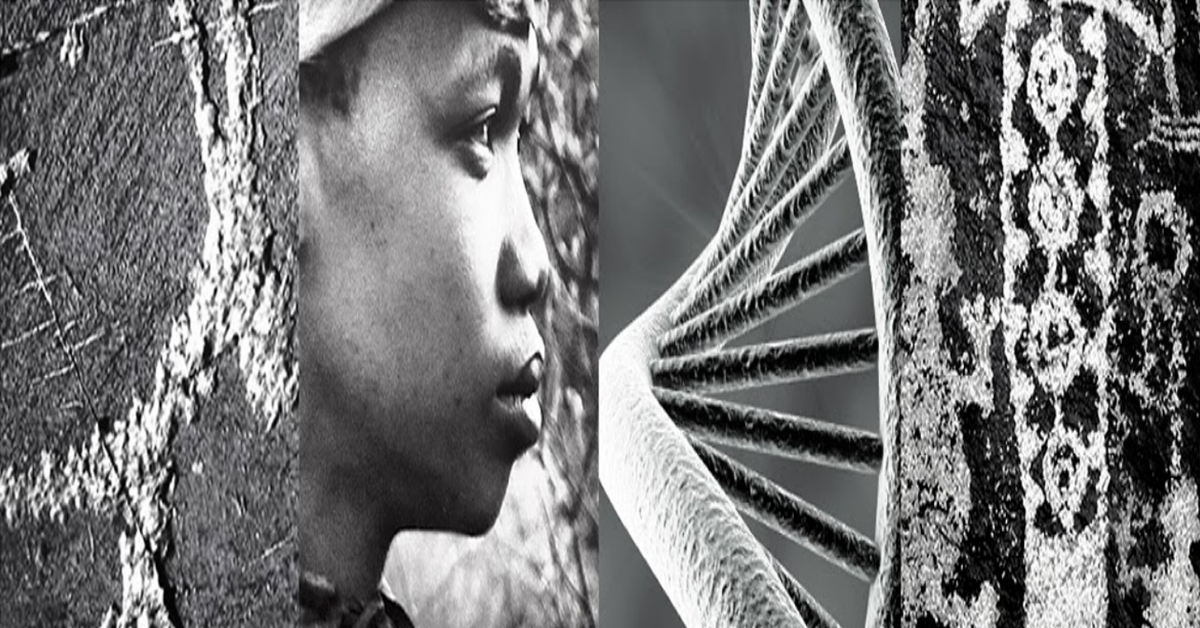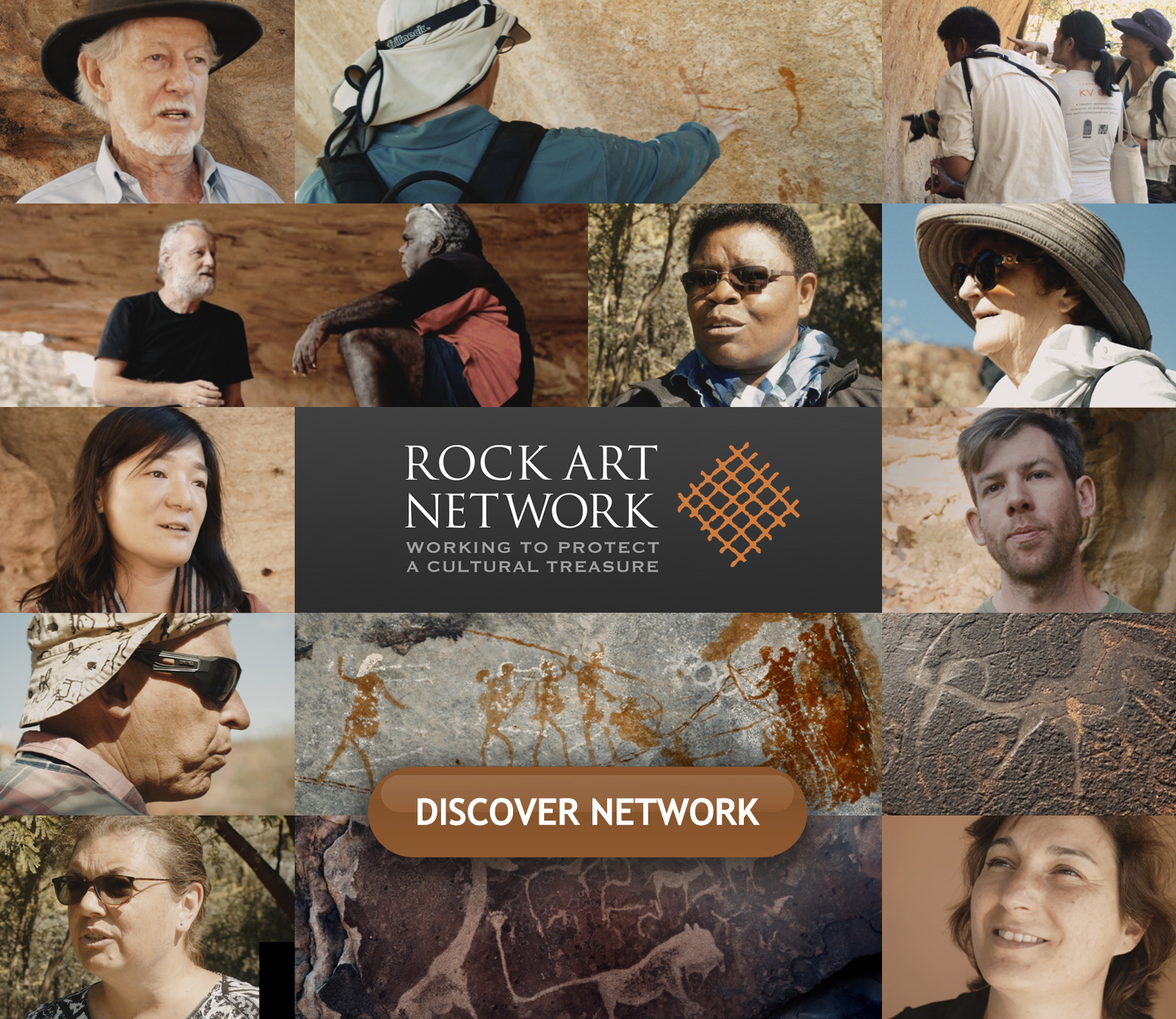


by Meenakshi Dubey-Pathak and Jean Clottes
Indian Rock Art From Early to Modern Times
The publication sets out with its regions of study: the rock art of Ladakh in northern India, Madhya Pradesh, Rajasthan and Chhattisgarh. Research so far has revealed that the oldest rock art of India belongs to the Mesolithic, dating back to some 12,000 years ago. So far, no rock art ('except cupules, if they can be considered as art') has been securely dated to the Palaeolithic, although that may well change with further investigation. Then, from the Mesolithic - roughly 10,000 BC to 2,500 BC - to the Neolithic - roughly 2,500 BC to 300 AD - to the Historic - roughly 300 AD to 800 AD - to the Medieval Historic - roughly 800 to 1300. Throughout, the art has evolved whilst retaining a homogeneous nature.
Indian Rock Art From Early to Modern Times
In India, where there is strong reverence to gods and local gods, the custom of making an offering - for benefits, for protection - is ubiquitous. The authors' research shows that in very many cases, these offerings are made in a painted or engraved shelter, in other words, in a place already considered to be full of active power.
Indian Rock Art From Early to Modern Times
For the authors, this new publication is a call to arms; further research in India must be carried out, with precise mapping of rock art site locations and the application of the advancing dating techniques. Obviously there must be further research involving a study of the archaeological context but equally importantly a greater documentation of the ethnological traditions. The latter represents not just a cultural 'residue' of the ancient rock art but a clear and present thread as complex, varied and vital as any mitochondrial network. This call to arms comes with a warning: do it now because this source of understanding will not last forever.
Product Details:
- Product details: Title: 'Time and Meaning - Indian Rock Art From Early to Modern Times'
- Authors: Meenakshi Dubey-Pathak and Jean Clottes
- Item code: UBE814
- Publisher: Pathak Publisher & Distributors
- Language: English
- Edition: 2023
- ISBN: 9789391952150
- Pages: 310 Cover: Hardcover
Indian Rock Art From Early to Modern Times
Dr Meenakshi Dubey-Pathak has specialized in the field of Indian Rock Art, which started in the Mesolithic (more than 10,000 years ago) or even before During her many years of fieldwork she discovered dozens of new painted sites, mostly in Madhya Pradesh (particularly in the Pachmarhi area about which she did her PhD), but also in Chhattisgarh, Rajasthan and Ladakh.
She has devoted nearly thirty years of her life to the discovery, study, publication, exhibitions, workshops and protection of Indian Rock Art. This has already eamed her a deserved international recognition. She has published many papers and four books: "Rock Art of Pachmarhi Biosphere", Delhi, BR Publications, 2012. "Des Images pour les Dieux. Art rupestre et Art tribal dans le Centre de l'Inde (with Jean Clottes). Arles (France), Éditions Errance, 2013. "Powerful Images. Rock Art and Tribal Art of Chhattisgarh" (with Jean Clottes). Bloomsbury Publications, 2017. "Madhya Pradesh Rock Art and Tribal Art" (with Jean Clottes), INTACH and Aryan Books International. She was Internationally awarded the high honour of Chevalier des Arts Lettres'-Knight in the National Order of Arts and Letters- by the French Minister of Culture and Communication in 2014.
She is an International Expert for rock art with ICOMOS and UNESCO. She was awarded Heritage Fellowship with Ministry of Culture, France. Also She is a Wakankar Senior Research Fellow.
Film on the "Central Indian Rock Art and Tribal Art", based on her research work, screened and awarded in the International Archaeology Film Festival in Nyon, Switzerland. March 2019.
She is a member of the Bradshaw Foundation Advisory Board (England) and a member of the Rock Art Network of the Getty Foundation (US).
Dr Jean Clottes studied at Toulouse University He was a Director of Prehistoric Antiquities for Midi Pyrénées from 1971 onwards, and after being a General Inspector for Archaeology at the Ministry of Culture (1991) he became a Scientific Advisor at the same Ministry for everything relating to prehistoric rock art, a position he held until his official retirement in July 1999.
He created and directed the International Newsletter on Rock Art (INORA). He has taught courses at the Universities of Toulouse (France). Neuchâtel (Switzerland), Gerona (Spain), Buenos Aires (Argentina, INAPL), Berkeley (USA), Victoria (Canada).
He is also an International Expert for rock art with ICOMOS and UNESCO.
He has published or co-published 30 books, directed 13 others and more than 600 papers. Seven of his books (and many papers) have been published in English: The Cave Beneath the Sea (Harry Abrams, 1996); The Shamans of Prehistory, with D. Lewis-Williams (Harry Abrams, 1998); World Rock Art (Getty Foundation, 2002); Chauvet Cave: the art of earliest times (ed.) (The University of Utah Press, 2003); Cave Art (Phaidon, 2008); with Meenakshi Dubey-Pathak). "Powerful Images. Rock Art and Tribal Art of Chhattisgarh Bloomsbury Publications, 2017. "Madhya Pradesh Rock Art and Tribal Art" (INTACH and Aryan Books International).
by Kate Winter
13 November 2025 Book Review Archive
→ Neolithic Tombs of Wales
by George Nash
19 November 2024
by Simon Radchenko
22 May 2024
by Meenakshi Dubey-Pathak and Jean Clottes
10 November 2023
by Paola Demattè
12 January 2023
by Paul Pettitt
10 November 2022
by George Nash
19 November 2024
by Simon Radchenko
22 May 2024
by Meenakshi Dubey-Pathak and Jean Clottes
10 November 2023
by Paola Demattè
12 January 2023
by Paul Pettitt
10 November 2022
Friend of the Foundation
by George Nash
19 November 2024
by Simon Radchenko
22 May 2024
by Meenakshi Dubey-Pathak and Jean Clottes
10 November 2023
by Paola Demattè
12 January 2023
by Paul Pettitt
10 November 2022


